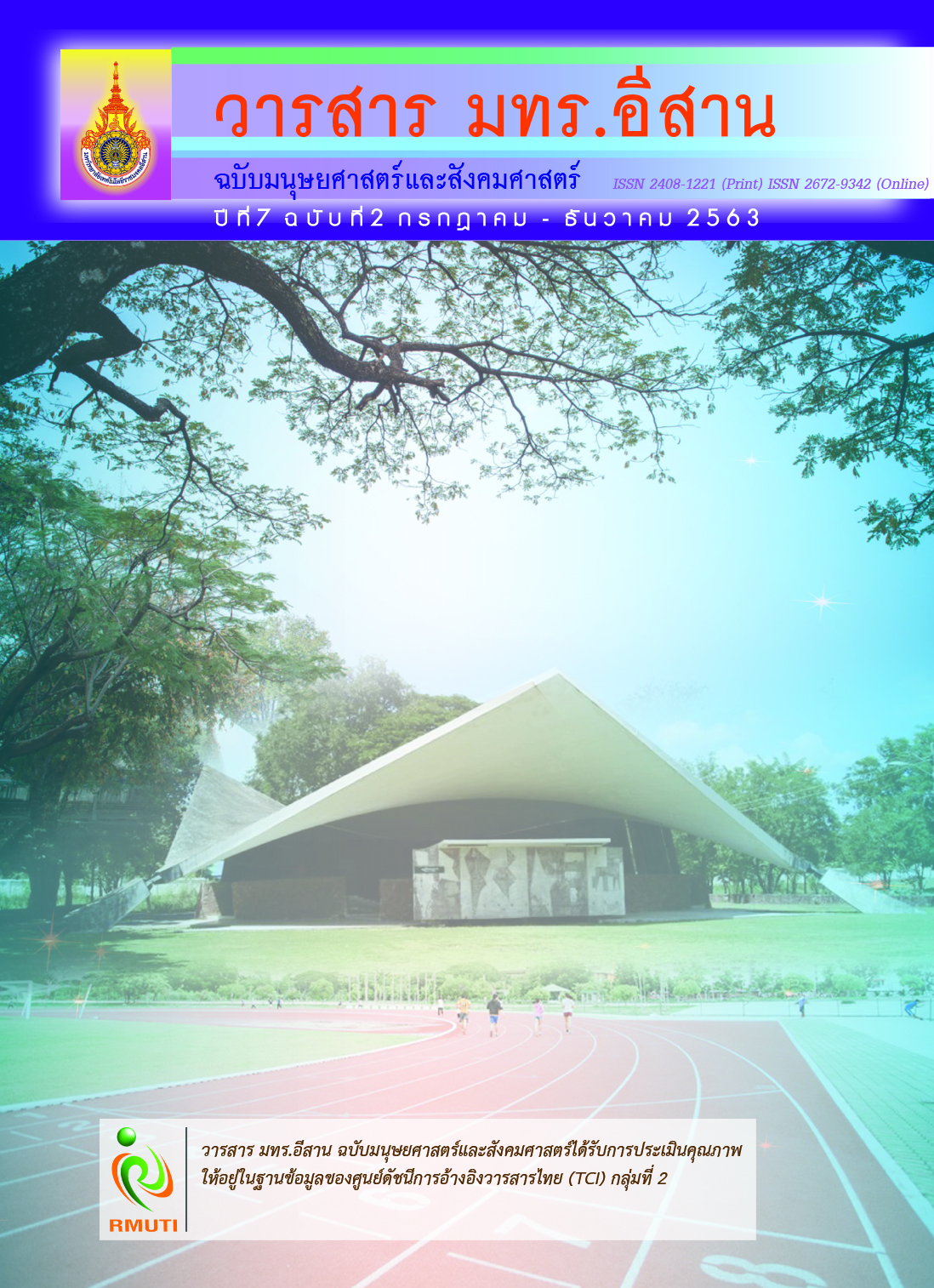Pre-Service Physics Teachers’ Problem-Solving Skills in Mechanics
Main Article Content
Abstract
Problem-solving skills in Physics is a crucial process for teaching the subject. This study aimed to study twenty-two pre-service teachers’ problem-solving skills in the Mechanics topic. All participants enrolled in School Internship I and II during the fifth year of the course. The data was collected through a two-tier test item with essay form (Mechanics Problem- Solving Skills Test). Content analysis in conjunction with frequency and percentage were used to analyze how teachers solved the physics problem in the test. The four assessment criteria set included: naïve, fair, moderate, and excellent. The findings revealed that all teachers held various ability in problem-solving skills in mechanics. Overall, they ranged from naïve to excellent category. Seven of them held less than fifty percent of the score which was categorized into the naïve whereas three of them were in the excellent category. Our findings not only highlight a need for preparing pre-service physics teachers’ problemsolving skills in physics, especially in mechanics concept, but also provide intensive course before they go to school internship in the last year of teacher preparation.
Article Details
บทความที่ได้รับการตีพิมพ์เป็นลิขสิทธิ์ของมหาวิทยาลัยเทคโนโลยีราชมงคลอีสาน
ข้อความที่ปรากฏในบทความแต่ละเรื่องในวารสารวิชาการเล่มนี้เป็นความคิดเห็นส่วนตัวของผู้เขียนแต่ละท่านไม่เกี่ยวข้องกับมหาวิทยาลัยเทคโนโลยีราชมงคลอีสานและคณาจารย์ท่านอื่นๆในมหาวิทยาลัยฯ แต่อย่างใด ความรับผิดชอบองค์ประกอบทั้งหมดของบทความแต่ละเรื่องเป็นของผู้เขียนแต่ละท่าน หากมีความผิดพลาดใดๆ ผู้เขียนแต่ละท่านจะรับผิดชอบบทความของตนเองแต่ผู้เดียว
References
Bagno, E. and Eylon, Bat-S. (1997). From Problem Solving to a Knowledge Structure: An Example from the Domain of Electromagnetism. American Journal of Physics. Vol. 65, Issue 8, pp. 726-736. DOI: 10.1119/1.18642
Daulay, K. R. and Ruhaimah, I. (2018). Polya Theory to Improve Problem-Solving Skills. Journal of Physics: Conference Series. Vol. 1188, pp. 1-6. DOI: 10.1088/1742-6596/1188/1/012070
Dufrense, R., Gerace, W., and Leonard, J. (1997). Solving Physics Problems with Multiple Representations. Physics Teacher. Vol. 35, Issue 5, pp. 270-275. DOI: 10.1119/1.2344681
Erlina, N., Jatmiko, B. and Wicaksono, I. (2015). Problem Solving Skills in Learning Physics. Proceeding International Conference: Trending Issues of School Education in Advanced Countries and Indonesia. pp. 427-445
Gunawan, G., Suranti, N. M. Y., Nisrina, N., and Herayanti, L. (2018). Students’ Problem-Solving Skill in Physics Teaching with Virtual Labs. International Journal of Pedagogy and Teacher Education (IJPTE). Vol. 2, pp. 79-90. DOI: 10.20961/ijpte.v2i0.24952
Hardiman, P., Dufresne, R., and Mestre, J. R. (1989). The Relation Between Problem Categorization and Problem Solving Among Experts and Novices. Memory & Cognition. Vol. 17, Issue 5, pp. 627-638. DOI: 10.3758/BF03197085
Heller, P. and Hollabaugh, M. (1992). Teaching Problem Solving Through Cooperative Grouping. Part 2: Designing Problems and Structuring Groups. American Journal of Physics. Vol. 60, pp. 637-644. DOI: 10.1119/1.17118
Huffman, D. (1997). Effect of Explicit Problem-Solving Instruction on High School Students’ Problem-Solving Performance and Conceptual Understanding of Physics. Journal of Research Science Teaching. Vol. 34, No. 6, pp. 551-570. DOI: 10.1002/(SICI)1098-2736(199708)34:6<551::AID-TEA2>3.0.CO;2-M
Ince, E. (2018). An Overview of Problem-Solving Studies in Physics Education. Journal of Education and Learning. Vol. 7, No. 4, pp. 191-200. DOI: 10.5539/jel.v7n4p191
Jong, A. L. M. and Hessler, M. G. M. (1986). Cognitive Structure of Good and Poor Novice Problem Solvers in Physics. Journal of Educational Psychology. Vol. 78, Issue 4, pp. 179-288. DOI: 10.1037/0022-0663.78.4.279
Kohl, P. B. and Finkelstein, N. D. (2005). Representational Format, Student Choice, and Problem Solving in Physics. AIP Conference Proceedings. Vol. 790, Issue 1, pp. 121-124. DOI: 10.1063/1.2084716
Kay, K. (2010). 21st Century Skills: Why the Matter, What They are, and How We Get There. In Bellanca, J. & Brandt, R. (Eds.), 21st Century Skills: Rethinking How Students Learn. Bloomington, In: Solution Tree Press
Netto, A. and Valente, M. O. (1997). Problem Solving in Physics: Towards A Metacognitively Developed Approach. March 21-24. Oak Brook
Sherin, B. (2001). How Students Understand Physics Equations. Cognition and Instruction. Vol. 19, No. 4, pp. 479-541
Sutarno, S., Setiawan, A., Kaniawati, I., and Suhandi, A. (2017). Pre-Service Physics Teachers’ Problem-Solving Skills in Projectile Motion Concept. Journal of Physics: Conference Series. International Conference on Mathematics and Science Education (ICMScE) 24 May 2017, Bandung, Indonesia, Vol. 895, pp. 1-6. DOI: 10.1088/1742-6596/895/1/012105
Zou, X. (2001). The Role of Work-Energy Bar Charts as a Physical Representation in problem Solving. Physics Education Research Conference. July 25-26. Rochester, New York. DOI: 10.1119/perc.2001.pr.021


